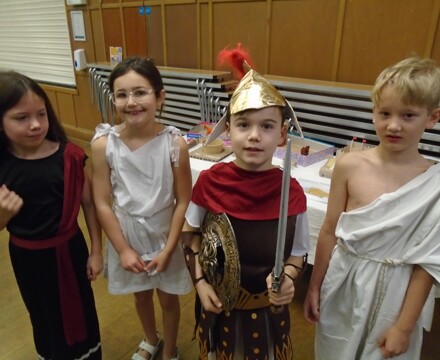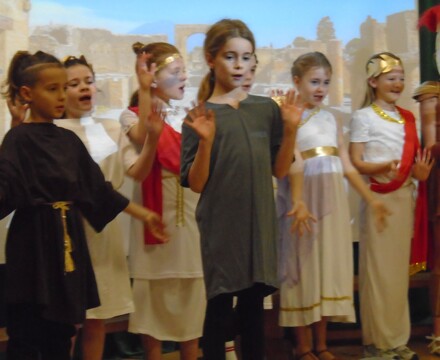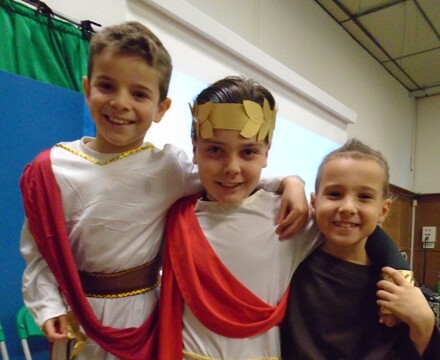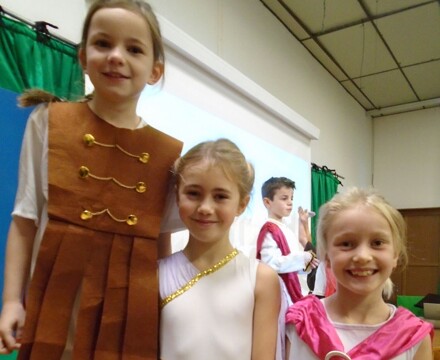- Home
- News & Events
- News
- Year 4 Roman Assembly
Year 4 Roman Assembly
Families and siblings were invited to enjoy the Year 4 assembly, which transported us back to Roman era. Pupils were dressed as slaves, soldiers, wealthy citizens and, of course, the Emperor with his wife and attendants.
Through their acting and songs, we learned about many aspects of Roman life, beliefs and the foods they enjoyed. We discovered that a slave’s only real chance of freedom was to serve the Empire for 30 years — something very few achieved. Many slaves were used to build Roman roads, and remarkably, some of these roads are still in use today. Roman soldiers were trained not only for battle but also in surveying, engineering and drainage. They even invented a surveying tool called the groma to create straight roads linking ports, forts and settlements.
The Roman Army was highly organised. A legionary belonged to a group of eighty soldiers called a century, led by a centurion. Six centuries formed a cohort, and ten cohorts made a legion. A legionary was expected to march 20 miles a day in full armour. Each legion carried a standard displaying its emblem. We also learned that the Romans worshipped many gods, believing that bad weather meant Mars was angry. To ward off evil spirits, they wore talismans and carried bags of lucky stones.
The play then shifted to the excitement of the Emperor’s arrival — riding on an elephant. He would be welcomed by local dignitaries and served unusual delicacies such as boiled swan, stuffed dormice and peacock, along with vast amounts of wine. Hosts even had to prepare a “vomit room” so he could continue feasting long into the night.
Large villas had central heating using aqueduct systems, and wealthy homes were decorated with floor and wall mosaics. Temples honoured the many Roman gods, and the roads built two millennia ago still form part of our landscape today. The impact of the Roman Empire is still felt in modern Britain.
Mr Wilson congratulated the pupils on their confident performance and the zest in their singing. He also praised the mosaics and 3-D models they had created during their study of this topic, and invited the audience to take time to view them. The audience applauded the wonderful performance, and the pupils delighted everyone by giving an encore of their opening song.




